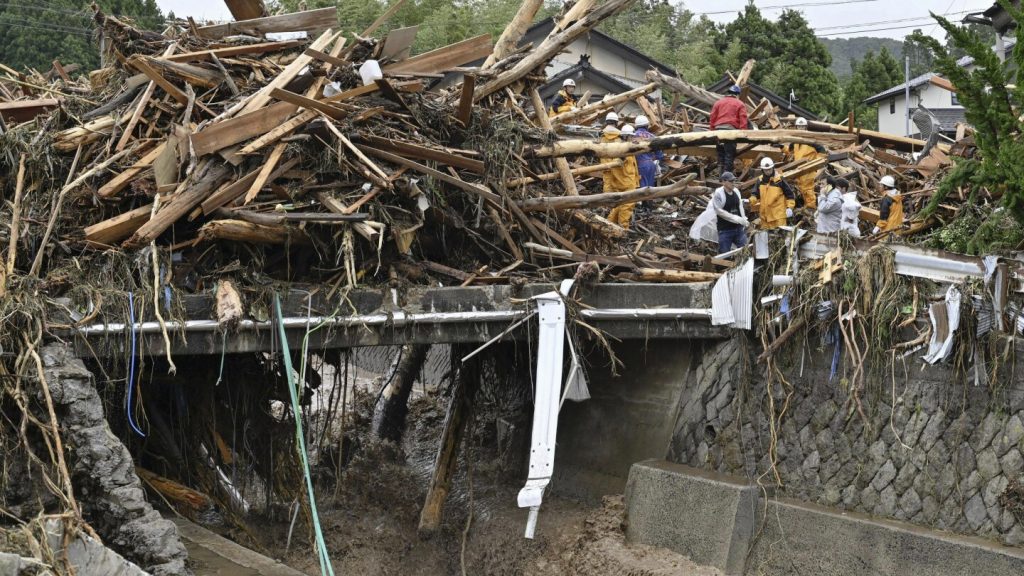The northcentral region of Noto, Japan, was hit by heavy rain, triggering landslides and floods and leaving at least six people missing. The Japan Meteorological Agency issued the highest alert level for heavy rain in several cities in the Ishikawa prefecture, including Suzu and Wajima. In Suzu, one person died and another went missing after being swept away in floodwaters, while in Noto, two people were missing following a landslide at a construction site where workers were repairing a tunnel damaged by a previous earthquake. The FDMA reported another person missing due to floods in a different part of Wajima.
In Wajima, footage showed a wooden house torn and tilted after being hit by a landslide, although no injuries were reported at the site. In Noto town, two individuals were seriously injured by a landslide while visiting their quake-damaged home. As of Saturday afternoon, at least 16 rivers in Ishikawa had breached their banks, prompting warnings of potential mudslides and building damage. With about 1,350 residents seeking shelter at community centers and other facilities, authorities urged caution and preparedness for further inclement weather.
Chief Cabinet Secretary Yoshimasa Hayashi acknowledged the anxiety felt by residents in the region recovering from the Noto earthquake, stating that the government’s priority was search and rescue operations. Hayashi emphasized the importance of heeding evacuation advisories and taking precautions, noting the deployment of Self Defense Force troops to assist in rescue efforts. A resident in Wajima expressed dismay at seeing his house flooded after just finishing cleaning up from the earthquake damage, with many roads and homes blocked by muddy water and lacking power and water supply.
Heavy rain also affected neighboring prefectures of Niigata and Yamagata, threatening flooding and suspending train operations, including the Yamagata Shinkansen bullet trains. The aftermath of the 7.6 magnitude earthquake that struck the region on January 1 still impacts the local industry, economy, and daily lives, with more than 370 people killed and key infrastructure damaged. The combination of recent disasters highlights the ongoing challenges faced by these communities and the imperative for continued support and recovery efforts.


